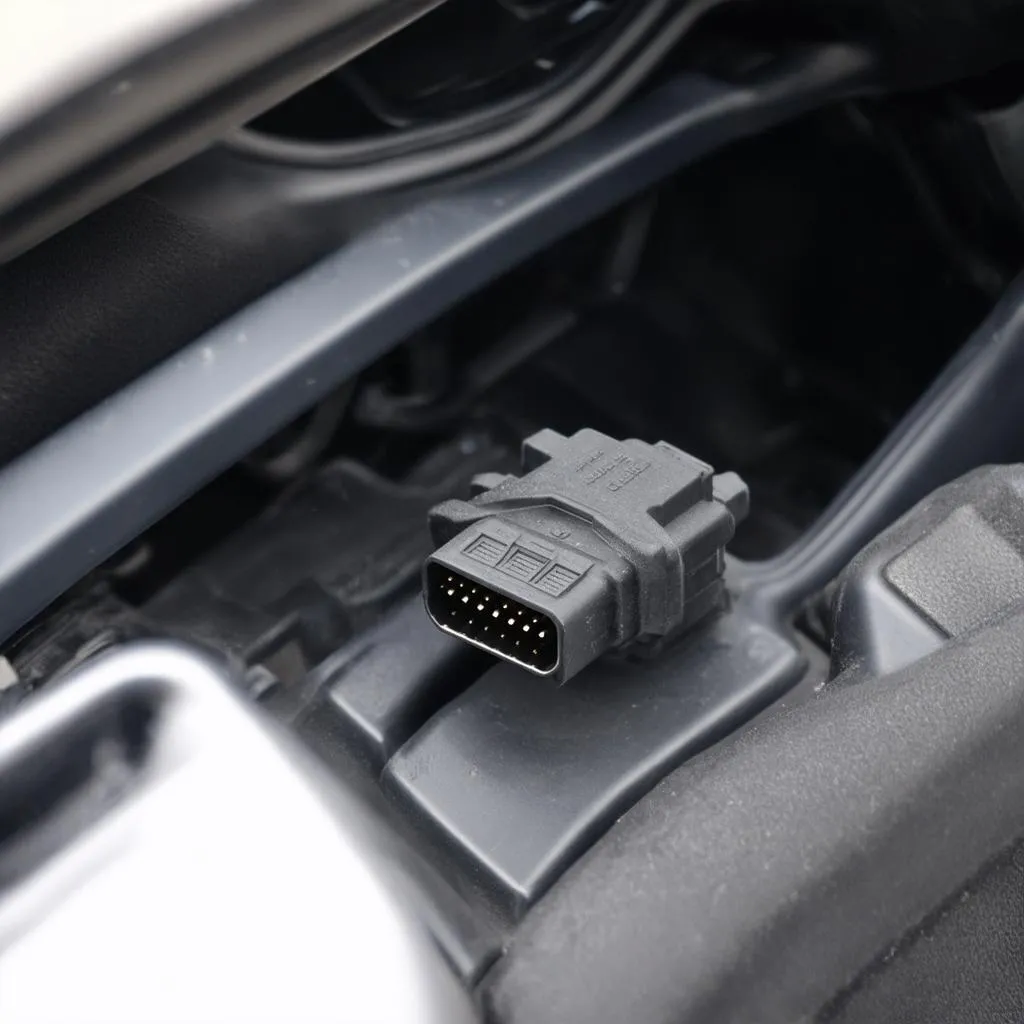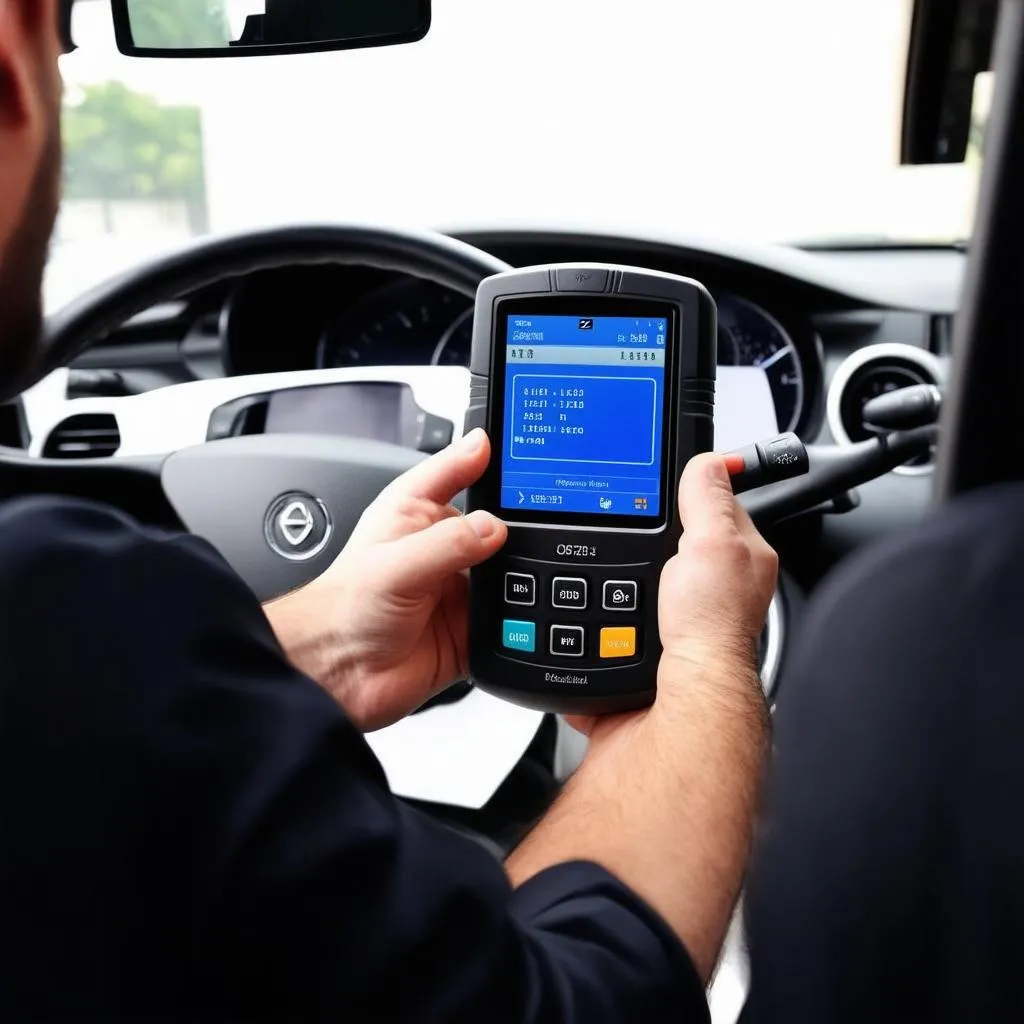They say knowledge is power, and in the world of automotive diagnostics, knowing how to use the K-Line OBD protocol is like wielding the magical staff of a powerful sorcerer! It grants you the power to unlock the secrets hidden within the electronic brains of your European cars, allowing you to diagnose and solve even the most perplexing problems. But what exactly is the K-Line OBD protocol, and how can it empower you?
The Significance of K-Line OBD Protocol
The K-Line OBD protocol is a communication standard used in older European vehicles to connect diagnostic tools to the car’s engine control unit (ECU). Think of it as a secret handshake, a language that allows your diagnostic tool to talk to the car’s computer. It’s crucial for troubleshooting issues, performing repairs, and even accessing valuable information about your vehicle’s performance.
A Deeper Dive: Understanding the K-Line
Imagine a busy city street with lots of cars going in different directions. That’s like the electrical system in your car, a complex network of wires carrying signals between various components. The K-Line is a single wire within this network, specifically dedicated to carrying data between the diagnostic tool and the ECU. This single wire can transmit a variety of information, like engine speed, fuel pressure, and even fault codes that might indicate a problem.
K-Line’s Importance in European Car Diagnostics
While newer European cars often employ the more sophisticated CAN bus protocol, the K-Line still plays a significant role in diagnosing older vehicles. It’s a crucial link in understanding and interacting with the ECU, offering a gateway to access crucial diagnostic data.
How K-Line OBD Protocol Works: A Journey into the Digital Realm
The K-Line protocol relies on a simple yet powerful communication method. Data is transmitted as a series of pulses, with different patterns representing different values. Think of it as sending a series of morse code signals. These pulses travel along the K-Line wire, allowing the diagnostic tool to gather information from the ECU.
The Role of Diagnostic Tools
Now, let’s bring in the diagnostic tool. It acts like an interpreter, translating the K-Line’s signals into human-readable information. With the K-Line OBD protocol, it can query the ECU for various data, identify error codes, and even adjust certain parameters.
Common Questions about K-Line OBD Protocol
What is K-Line OBD protocol?
K-Line OBD protocol is a communication standard used in older European vehicles to connect diagnostic tools to the car’s engine control unit (ECU). It’s a single wire that carries data between the diagnostic tool and the ECU, enabling troubleshooting, repairs, and accessing vehicle information.
Why is the K-Line OBD protocol important?
The K-Line OBD protocol is crucial for diagnosing and repairing older European cars, as it provides access to the ECU’s information and allows for communication with diagnostic tools.
What are the limitations of K-Line OBD protocol?
The K-Line OBD protocol is limited in its capabilities compared to the CAN bus protocol. It can be slower and may not support all the features available on newer cars.
How do I use K-Line OBD protocol?
You need a diagnostic tool specifically designed for K-Line communication to use this protocol. The tool will connect to the car’s OBD connector, and then you can use the software to access the ECU’s data.
What are some popular K-Line OBD diagnostic tools?
Many diagnostic tools, like Dealer Scanners specifically designed for European cars, support the K-Line protocol. These tools often come with comprehensive software packages for reading and clearing codes, accessing live data, and performing other diagnostics.
Using K-Line OBD Protocol: Tips and Tricks
-
Find the Right Diagnostic Tool: Ensure your tool supports the K-Line protocol and is compatible with your car’s make and model.
-
Locate the OBD Connector: Most vehicles have the OBD connector under the dashboard, near the steering column.
-
Connect and Power On: Connect the tool to the OBD connector and power it on.
-
Select the Right Protocol: Use the tool’s settings to select the K-Line protocol for communication.
-
Access the ECU: Once connected, you can use the tool’s software to access the ECU and perform various diagnostic functions.
K-Line and the Power of Knowledge
Mastering the K-Line OBD protocol empowers you to become a true automotive sorcerer! It allows you to peek behind the curtain of your car’s electronic systems, diagnose problems, and take control of your vehicle’s health.
 obd-connector
obd-connector
Explore Further: Your Journey Begins Here
To enhance your knowledge, check out our other insightful articles:
- Best OBD Scan Tool for Mini
- OBD-I
- OBD Ford Fiesta
- CEN-TECH OBD-II CAN Scan Tool
- 1995 Ford Ranger OBD Location
Need Assistance?
If you need help with any aspect of using K-Line OBD protocol or have specific questions about your European car, feel free to contact us on Whatsapp: +84767531508. Our team of experts is available 24/7 to assist you with any queries.
 dealer-scanner
dealer-scanner
Let’s unlock the secrets of your European car together! Leave a comment below to share your experiences or ask further questions. Happy diagnosing!